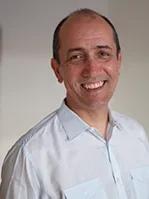Learning and Memory
Understanding Learning And Memory
How The Brain Makes And Retains Memories

Your brain is constantly forming memories, from specific details to big ideas. Imagine you are an experienced hunter searching for food in the African savannah. As you roam the landscape, you pass a bush and remember that a snake once attacked you near a patch of similar looking vegetation. To avoid another dangerous interaction, you continue along the trail. Memories linked together in space and time are stored close together in some of the same cells in the brain. When one of those memories is triggered later, those cells are activated and consequently the other may be recalled as well.
The processes that allocate memories in the brain affect how we remember events, and memory deficits in a number of neurological and psychiatric conditions may be caused by deficits in these processes. Knowledge of memory formation, allocation and storage are allowing us to develop treatments to combat these memory deficits.
The Science
How exactly do we form memories, and why do we know what we know?
Since his teenage years, UCLA Neuroscientist Alcino Silva, PhD has been digging at these questions. Silva discovered how the allocation of one memory to a group neurons can than determine for a time where another memory is stored, thus linking the two memories in the brain. In other words, memories are catalogued in an organized fashion based on when and where they were formed, and Dr. Silva’s laboratory revealed the mechanism. Silva also found that this mechanism for linking memories across time is especially affected by aging.
The Discoveries
- Silva made a captivating discovery explaining how memories are wired like beads on a string. He discovered that memories acquired close in time are stored in overlapping populations of neurons within an area of the brain, and that during recall they activate each other and therefore are co-recalled.
- Silva’s influential work with disease models has led to therapies currently being tested for two debilitating neurological conditions. These therapies were developed based on Silva’s insights into memory formation and consolidation.
- Silva’s research pioneered the concept that disorders known to disrupt development may nevertheless be treated in the adult brain. This transformative work paved the way for treatment of children born with previously untreatable genetic diseases.